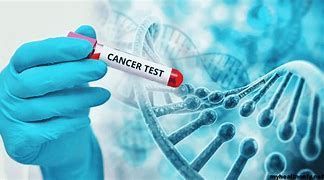Understanding Sexually Transmitted Infections in Lesbian Relationships

When discussing sexually transmitted infections (STIs), the focus is often centered around heterosexual or gay male relationships. However, it's crucial to acknowledge that STIs can affect individuals in all types of sexual relationships, including lesbian relationships. In this blog, we will explore common STIs among lesbians, risk factors, preventive measures, and the importance of regular testing and open communication.
1. Common STIs Among Lesbians:
- Human Papillomavirus (HPV): HPV is a viral infection that can lead to genital warts and increase the risk of certain cancers. Although HPV is commonly associated with heterosexual transmission in women, it can still be transmitted between female partners through skin-to-skin contact. Vaccination and regular Pap smears can help detect and prevent HPV-related complications.
- Bacterial Vaginosis (BV): BV is a common vaginal infection caused by an imbalance of bacteria. While the exact transmission methods are not fully understood, it can occur between female partners. Maintaining good vaginal hygiene and avoiding douching can help reduce the risk of BV.
- Herpes Simplex Virus (HSV): HSV is a viral infection that causes outbreaks of painful sores or blisters. Transmission can occur through direct contact with the infected area or through oral-genital contact. Using barriers, such as dental dams, during oral sex and avoiding contact during outbreaks can minimize the risk of transmission.
2. Risk Factors:
- Multiple Sexual Partners: Having multiple sexual partners can increase the risk of STI transmission, regardless of sexual orientation. It's important to have open and honest discussions about sexual health with partners.
- Sharing Sex Toys: Sharing sex toys without proper cleaning or using barriers can increase the risk of STI transmission. Clean toys thoroughly or use condoms on them between partners. Diversity Family Health has private labeled a great toy cleaning solution developed to reduce transmission of STI’s.
3. Preventive Measures:
- Barriers: Using barrier protection can reduce the risk of STI transmission. Using barriers, such as dental dams or gloves, during oral sex, and using condoms or gloves during manual or penetrative sex can provide protection. Proper cleaning and disinfection of sex toys are also essential.
- Regular Testing: Regular STI testing is crucial, regardless of sexual orientation. It's recommended to get tested regularly, especially if there has been a change in sexual partners. Healthcare providers can guide individuals on appropriate testing schedules based on specific needs.
- Vaccinations: Vaccines like the HPV vaccine can provide protection against certain strains of the virus, reducing the risk of HPV-related complications.
4. Open Communication and Support:
- Honest Discussions: Open and honest communication with partners about sexual health, testing history, and potential risks is essential. Creating a safe space for discussing concerns or questions can foster trust and promote informed sexual behaviors.
- LGBTQ+ Healthcare Providers: Seeking healthcare from LGBTQ+-experienced providers who are knowledgeable about lesbian sexual health can ensure better understanding and support. Book your sexual health appointment with Diversity Family Health.
Conclusion: Sexually transmitted infections can affect individuals in all types of sexual relationships, including lesbian relationships. Through regular testing, implementing prevention strategies, and open communication, lesbians can prioritize their sexual health and well-being. Remember, being proactive about sexual health is an important aspect of maintaining a healthy and fulfilling life, regardless of sexual orientation.










